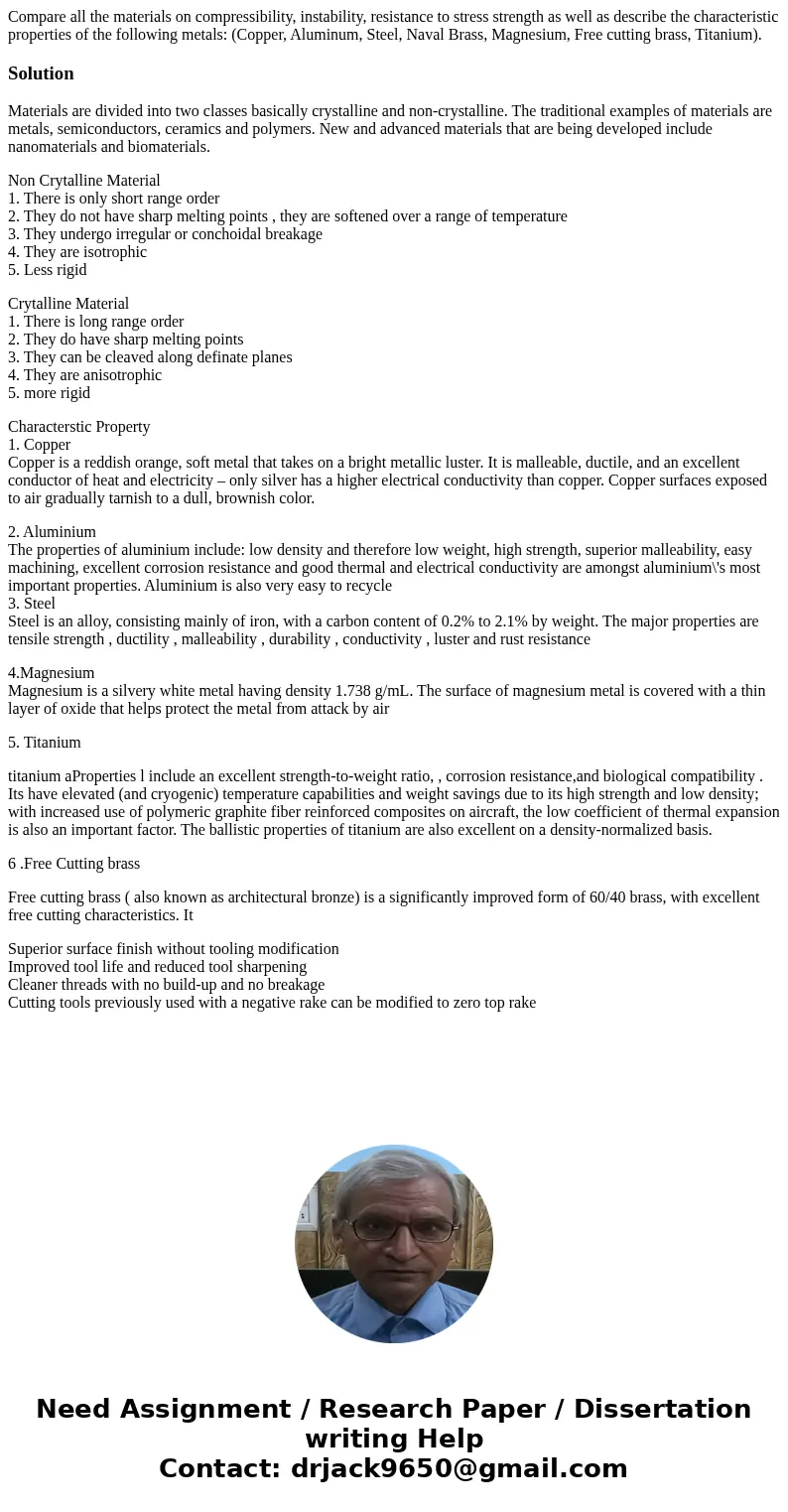Compare all the materials on compressibility instability res
Solution
Materials are divided into two classes basically crystalline and non-crystalline. The traditional examples of materials are metals, semiconductors, ceramics and polymers. New and advanced materials that are being developed include nanomaterials and biomaterials.
Non Crytalline Material
1. There is only short range order
2. They do not have sharp melting points , they are softened over a range of temperature
3. They undergo irregular or conchoidal breakage
4. They are isotrophic
5. Less rigid
Crytalline Material
1. There is long range order
2. They do have sharp melting points
3. They can be cleaved along definate planes
4. They are anisotrophic
5. more rigid
Characterstic Property
1. Copper
Copper is a reddish orange, soft metal that takes on a bright metallic luster. It is malleable, ductile, and an excellent conductor of heat and electricity – only silver has a higher electrical conductivity than copper. Copper surfaces exposed to air gradually tarnish to a dull, brownish color.
2. Aluminium
The properties of aluminium include: low density and therefore low weight, high strength, superior malleability, easy machining, excellent corrosion resistance and good thermal and electrical conductivity are amongst aluminium\'s most important properties. Aluminium is also very easy to recycle
3. Steel
Steel is an alloy, consisting mainly of iron, with a carbon content of 0.2% to 2.1% by weight. The major properties are tensile strength , ductility , malleability , durability , conductivity , luster and rust resistance
4.Magnesium
Magnesium is a silvery white metal having density 1.738 g/mL. The surface of magnesium metal is covered with a thin layer of oxide that helps protect the metal from attack by air
5. Titanium
titanium aProperties l include an excellent strength-to-weight ratio, , corrosion resistance,and biological compatibility . Its have elevated (and cryogenic) temperature capabilities and weight savings due to its high strength and low density; with increased use of polymeric graphite fiber reinforced composites on aircraft, the low coefficient of thermal expansion is also an important factor. The ballistic properties of titanium are also excellent on a density-normalized basis.
6 .Free Cutting brass
Free cutting brass ( also known as architectural bronze) is a significantly improved form of 60/40 brass, with excellent free cutting characteristics. It
Superior surface finish without tooling modification
Improved tool life and reduced tool sharpening
Cleaner threads with no build-up and no breakage
Cutting tools previously used with a negative rake can be modified to zero top rake

 Homework Sourse
Homework Sourse